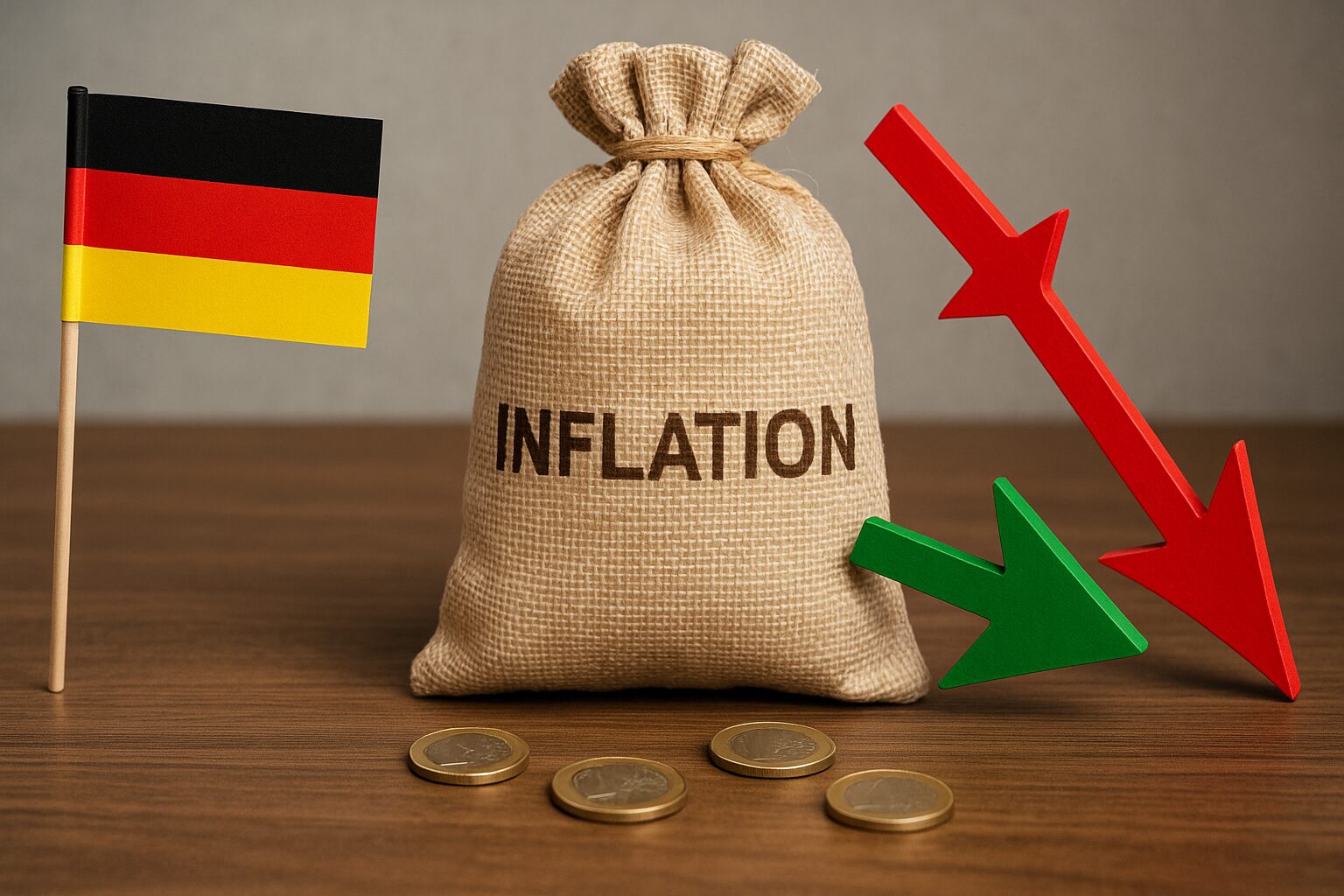Across Germany’s various states, recent inflation data tell a varied story. In Bavaria, consumer prices were unchanged at 2.1% in May, the same as April’s level.
Baden-Wuerttemberg, however, softened from 2.4 to 2.2%. North Rhine-Westphalia rose by a small margin from 1.8 to 2.0%, while Lower Saxony rose from 2.2 to 2.3%. Together, these figures show that some areas are falling while others are still seeing upward pressure, even though country-level forecasts look to the European Central Bank’s 2.0% benchmark.
State statistics usually lead country-level trends. Germany typically publishes these numbers before the euro zone’s harmonized inflation rate.
Economists now expect the country-level rate to decline to about 2.0%, down from April’s 2.2%. If that continues, it would be the first time in almost three years Germany’s inflation exactly meets the ECB’s long-term goal.
Policymakers will be watching to see if Bavaria’s stability and Baden-Wuerttemberg’s mild deceleration compensate for North Rhine-Westphalia’s and Lower Saxony’s mild rises.
Bavaria’s stable prices mean local consumer demand and producer prices have stabilized at this point. Energy prices, which fueled last year’s volatility, also appear to be leveling out, and food prices, though still elevated, are no longer rising at breakneck speed. As observers note, certain Bavarian firms absorbed shipping and raw-material costs rather than passing them all on to customers, keeping prices subdued.
That relative calm is a contrast to North Rhine-Westphalia, where rises in housing and transport costs likely pushed inflation up from 1.8 to 2.0%.
As the most populated state of Germany, North Rhine-Westphalia experiences national price trends early on compared to other states, especially in the urban areas whose demands are still robust.
Lower Saxony’s tame rise to 2.3% could be because it has agriculture and export-based sectors which remain susceptible to global freight charges and commodity prices.
As a major producer of machinery and processed foodstuffs, raw material price fluctuations can get transmitted easily to consumers.
Conversely, Baden-Wuerttemberg’s decline to 2.2% suggests regional manufacturers are seeing some respite.
Books indicate chip prices have eased off and logistics bottlenecks are gradually unwinding so marginal cost reductions can reach the consumer.
Underlying, headline inflation minus volatile energy and food segments has been slightly above 2.0% in several states.
In North Rhine-Westphalia and Lower Saxony, service sector inflation is still slightly sticky due to higher labor costs and lingering demand after the pandemic.
Conversely, in Bavaria and Baden-Wuerttemberg, core figures hover near the ECB benchmark, indicating a more balanced interplay between supply conditions and consumer purchasing power.
Consumer sentiment also enters the picture. Recent surveys indicate German households growing more positive, with optimism climbing for four months in a row. True wage gains, averaging roughly 3.8% in the first quarter, provide some insulation against continuing price pressures.
The gain in income helps families cover daily expenses, but if wages rise faster than productivity, firms could be compelled to raise prices in a bid to preserve profit margins, keeping inflation narrowly above target in certain areas.
As the euro zone’s largest economy, Germany’s inflation trajectory usually sets the trend for the whole group.
If the national rate at 2.0% would ease pressure on member states experiencing higher inflation, there is a danger for a collective downward trend to boost the ECB’s request for carefully cutting rates further in the summer.
But there are risks. Increased volatility in raw materials or geopolitical developments, particularly in energy markets, could revive price pressures.
Last, these state snapshots recall that German inflation is not a one-size-fits-all phenomenon. Local circumstances, whether tied to industrial production, home demand, or agricultural cycles, affect price activity on the ground. While national figures emerge and the euro zone total comes into view, eyes will be peeled to discern whether these divergences in the regions are in harmony with the ECB’s mandate.
If they do that, Germany’s higher inflation could give policymakers the courage to move towards more accommodating monetary policy, for price stability as well as growth.
Visit our Finance page for related articles



